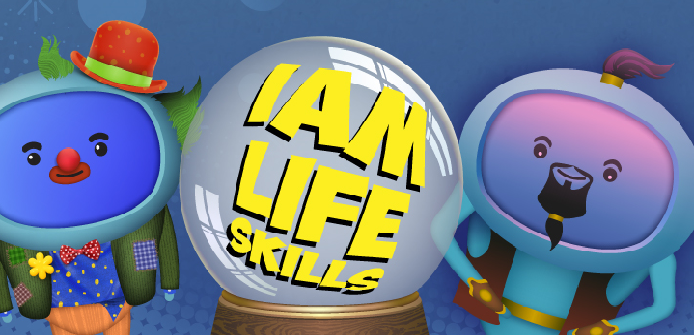Cast your mind back to your childhood. Do you remember the very first textbook you were given in primary school? Of course not! Well, not unless you have an eidetic memory. But we bet you’ll remember the book about a certain tiger turning up for a meal. Or maybe the one about the kid who writes to the zoo for a pet. Or the insect who eats everything in sight?
Why is that? Surely these books aren’t full of key advice for the future? Maybe it’s just the bright colours and animals? Well, that’s probably what drew you to them at the time. But really, it’s because they all had a gripping story.
We still learn through storytelling. Always have. Years of history told through word of mouth, generations telling the tale, adding their spin, developed into something more and finally bought by Hollywood to turn into their latest blockbuster (or flop).
Why should your eLearning be any different? Let’s face it, when we’re trying to learn a new skill, snoozing to a PowerPoint presentation isn’t very effective. We dread those training days. They just don’t grip us.
No, we prefer content with stories, characters, themes, a plot. This stuff helps key learning to ‘stick’ in our heads. We’ve found that courses with storytelling outperform presentations every time. In fact, the only way to get presentations to really stand out is to have the presenter charm with their charisma and tell a story themselves to weave in and out of the content, but sadly, this is often not the case.
Our ethos at iAM is that we make learning fun again. We want to take you back to an age where learning didn’t feel like learning. Where you were just enjoying yourself, following a story. That doesn’t mean the learning is secondary in our courses. In fact, it’s front and centre, helping to make complex information relatable and simple. But we do weave in fun, characters, plot and memorable moments throughout, to help aid memory and engage with learners.
To that end, we’ve got some top tips and a video to help businesses adopt storytelling in their own workplace learning. Let’s take a look...
1. Think about your audience
Think about your audience – Learning should be accessible for all people, but, equally, certain subjects aren’t suitable for everyone’s needs. If the tone is too high-brow, you’re going to alienate much of your audience. However, if it’s too simplistic, you’re potentially going to make more skilled learners ‘zone out’. Work out who your audience is before even thinking of starting your learning.
2. Start at the beginning
All good stories have a start, middle and end, and so should your learning. Introduce characters and follow their journey, painting a picture of the problems they may be having so you can use the learning to resolve them at the conclusion.
3. Don't get carried away
Try not to get swept away with the plot, theme and character development. Yes, this seems a bit backward considering the rest of the blog. But if you’re creating eLearning content, for example, all that stuff should be in the background. Learning should be your primary concern. You can tell much of a story visually rather than explicitly telling learners what’s going on and distracting them from the subject at hand.
4. Characters should be memorable
Look, we can all recognise a stock image when we see one. We tend to zone out when we do, they blend into the background. How do you tell a story with unrelatable, boring characters that aren’t like your employees? Choose colourful, larger than life characters, created to suit your brand. And if your brand doesn’t have a suitable character, brainstorm to create an appropriate one, giving it a personality.
5. Use the bizarreness effect
Writing something bland that only covers off the learning objectives won’t draw people in. However, if you do something more creative, and a little bizarre, you can get better results. Something simple like a character from history using modern tech. Don’t overdo it though because learners will ONLY remember the ‘weirdness’ and not the learning.
6. Use plain and simple language
If you want people to take the learning in, tailor the content for your audience. If it’s a more formal environment, then use appropriate formal language. But we find a friendly, conversation style, where complicated terms are explained easily is best. It might be a well-known acronym in YOUR business, but not every has the same background and experience as you. Humans like to read as we speak.
7. Make music from your words
Five-word sentences are fine. Even three words. One. But to really create a musical rhythm with your words, you need to vary the length. Aim for fifteen-word sentences as a maximum, unless, like this, you want to engage your learner further, for longer. A combination of short, medium and long sentences creates copy that learners love to read.
So, there are some top tips to creating great content. But why bother when we’ve probably got the content you need in our LMS already created? We’ve done the hard work and are very happy to provide you with the courses you desire if you need a helping hand with your learning. For things we don’t (yet) have in our library, well, we have a roadmap of upcoming stuff. But we’re happy to take requests from customers too.
Try iAM Learning for yourself - get started today!




